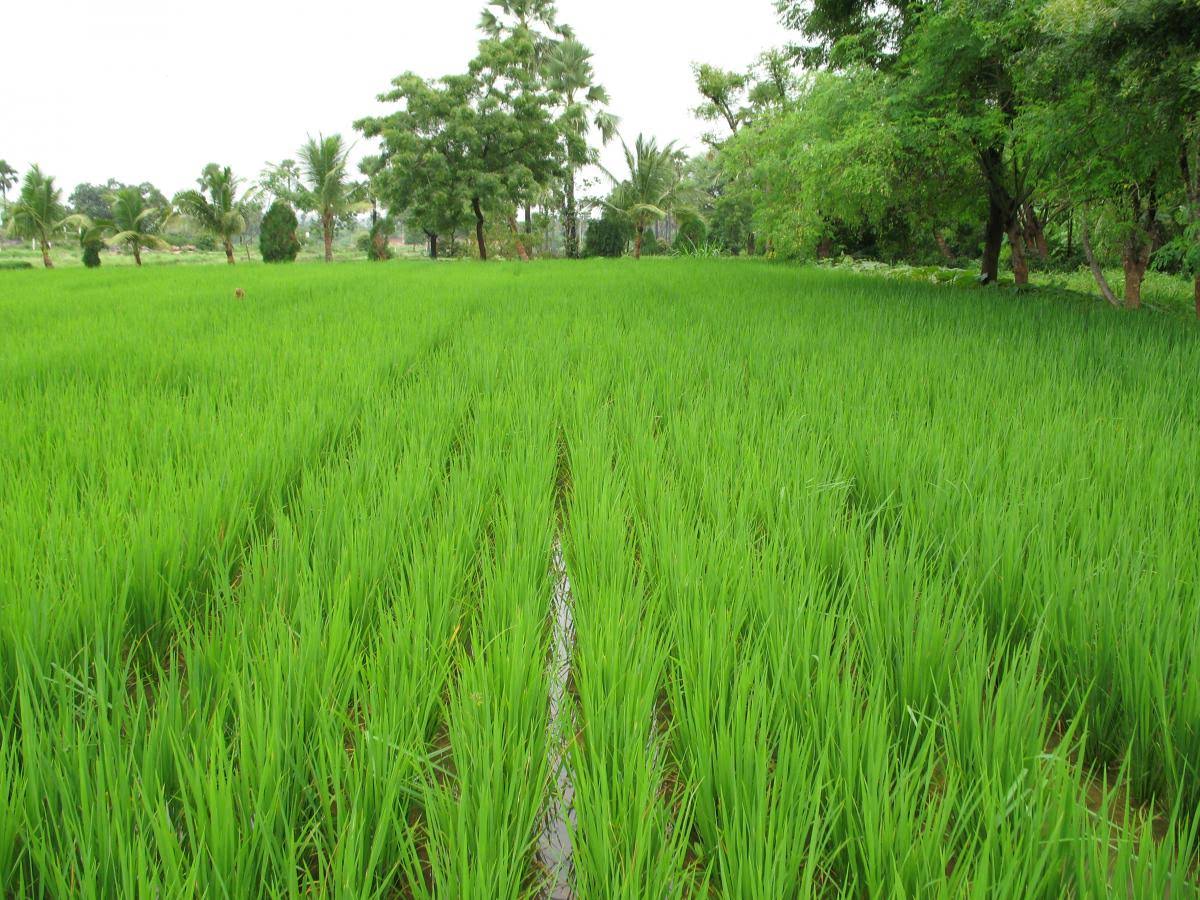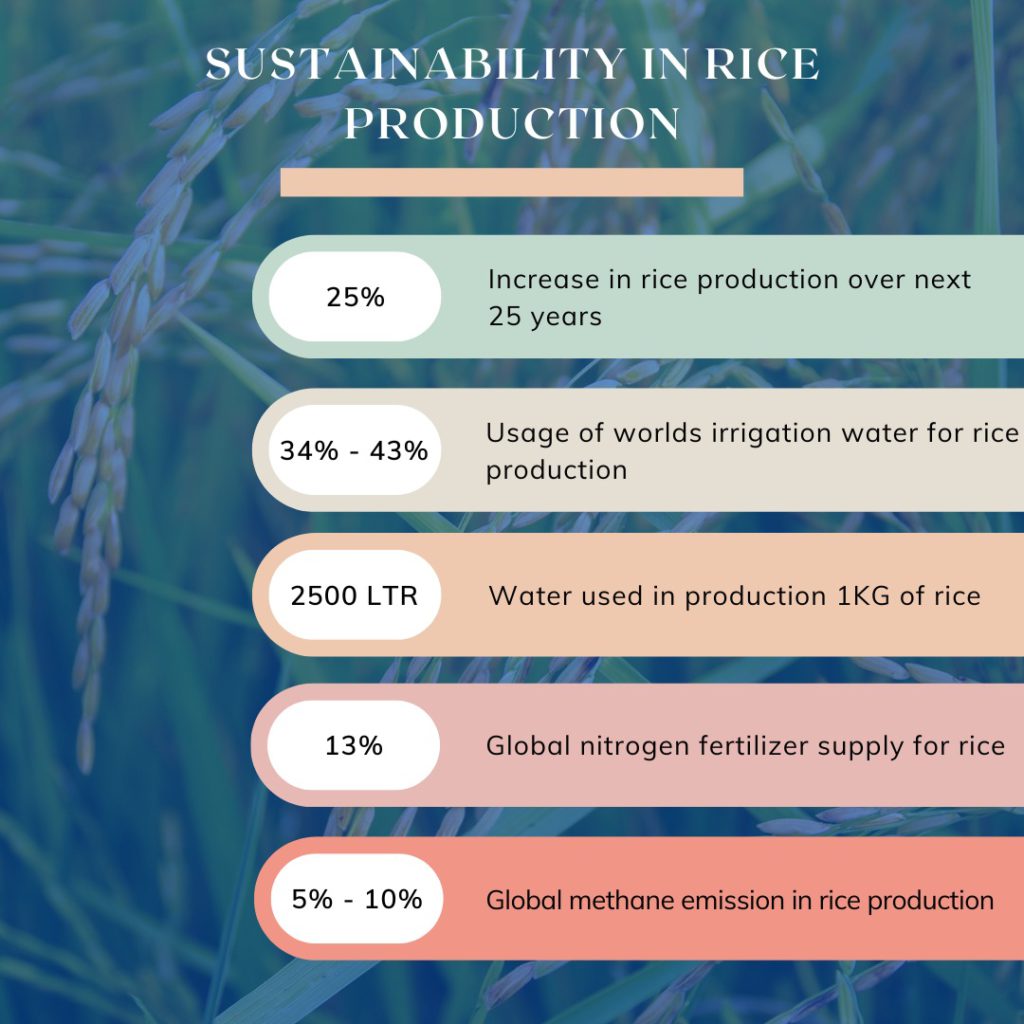Contact: +91 99725 24322 |
Menu
Menu
Quick summary: The volume of rice produced around the world has created a need for a robust system that can track paddy through its journey in the supply chain to ensure safety and security and promote sustainable and climate resilient food production through blockchain traceability solutions.

Given that it provides more than one-fifth of all the calories consumed by people globally, rice is the most significant food crop in terms of human nutrition and calorie consumption and hence traceability in the rice supply chain becomes very important.
Rice is a basic grain consumed as a staple food in almost every Indian kitchen. A seed that is consumed by more than half of the world’s population and is a subsistence agricultural commodity in most parts of the world. Rice is a tropical plant that is comfortably growing in a hot and humid climate fed with heavy annual rainfall, hence the name Kharif crop (monsoon crop). Given that it provides more than one-fifth of all the calories consumed by people globally, rice is the most significant food crop in terms of human nutrition and calorie consumption. Hence management and optimization of Rice Supply chains is very important.
India is the second largest producer of rice in the world after China, accounting for 20 % of world rice production. About four-fifth’s rice in the world is produced by smallholder farmers and is consumed locally. India has the largest area under paddy in the world, occupying 43.39 million ha
Rice grows on a variety of soil like silt, loams and gravel and is composed of 68% water, 28% carbohydrates, 3% protein, and negligible fat. On average rice provides 20% of the world’s dietary energy supply. In 2021-22 about 509.87 million metric tons of rice were consumed worldwide.
1Indian Rice market is projected to register a CAGR of 2.7% in the forecast period 2022-27. According to Rice Exporters Association, Indian rice exports touched 20 million in 2021, that included 16 million ton of non-basmati rice. The high demands from the US and European markets are supporting growth of this market. The major rice producing states are West Bengal, UttarPradesh, Andhra Pradesh, Tamil Nadu, Odisha and Bihar.
The rice supply chain functions as a traditional multi-stage supply system. Its basic framework would include farmers as the basic suppliers of paddy, middlemen, processing industries, distributors and retailers.
Following the collection of paddy from small and large farmers with the aid of Mundi and middlemen, the rice processing facilities begin by washing the paddy, de-husking, polishing, packing, and then storing it before sending it to distribution centers. This requires supply chain coordination and flexibility as activities can affect both upward and downward in the supply chain.
The traditional supply chains lack efficiency due to the intermediaries that exist between the farmer and the processing company. There are intermediaries yet again between the processing company and the consumer. This results in greater complexity, increased costs and reduced margins. The supply chain management needs cooperation both in upward and downward streams of the supply chain.
Sustainability refers to the optimal use of natural resources produced to maintain an ecological balance in society.
Sustainable agriculture refers to the production of plants and animals in ways that do not jeopardize current or future generations’ requirements or resources.
Sustainability in a supply chain refers to the organizational effort to minimize the environmental, social and economic impact created by the supply chain. It includes all those that impact the ecological balance through all such processes of sourcing, processing, storage and delivery. The goal is to minimize the impact created by using natural resources, energy consumption, water wastage, waste management, etc throughout the supply chain.
Rice has a sizable ecological footprint. Harvested on 8 % of world’s croplands, it uses 27 million tons of fertilizer, receives about 550cc of irrigation water and accounts for 1.2% of global GHG emissions. Rice farming is also associated with poverty. Around 400 million people are engaged in growing rice on 144 million smallholder farms.
It is expected that the global demand for rice will grow by 2050. There is less land available due to land conversion, soil salinity and water scarcity and the weather and climatic changes will impact production. Rice farming has a number of sustainability challenges, particularly in the usage of water and fertilizers and emission of GHGs from flooded rice fields.

Rice farmers are most vulnerable to climate change impacts like drought, floods, rise in temperatures and rising sea levels. The rice sector needs to address the challenges of boosting production, protecting the environment and safeguard farmer’s livelihoods
The Sustainable Rice platform (SRP) was launched to encourage adoption of sustainable and climate resilient practices for rice farming to boost farmer incomes and protect the environment.
Traceability refers to the ability to verify the history of a product location, type or process throughout the development of a product. It involves processes right from sourcing of raw materials to packed rice reaching the customer.
Data collection is done at every stage of the supply chain to ensure traceability. When data is collected, exchanged, and linked across participants in the supply chain, a tracking path is created that is used to track the product in real-time. A traceability system involves certain criteria in data collection depending on the depth, breadth and precision required.
Data relating to product identification, including, size, weight, volume, color, etc are recorded. Product routing and handling frameworks are designed at every level. Traceability tools relating to data collection, data accuracy and sharing are implemented, and all such product progress is recorded both internally and externally.
In the rice traceability model, there are field surveys and data recording systems that record data at the farmer’s level relating to seed type, variety, planting date, fertilizers used, yield and harvest date, handling details, farmers ID, Lot ID (unique) and date sold. All such data along with the harvest’s transportation details are sent to the rice milling or procession unit where purchase date, quantity, production date, grade quality, testing certificates, expiry date, industry ID, and shipment details are recorded and sent to distributors who provide information on logistics, storage and maintenance.
All such data is recorded in real-time creating a tracking pathway to trace back the product at any stage in the supply chain.
Blockchain technology has brought producers, retailers and exporters on a single platform through smart contracts to record and share data digitally, creating a large network of people to collectively ensure quality, safety and fair trade.
TraceX works with thousands of farmers across geographies to digitize their farm operations and provide end to end traceability for greater visibility and accountability.
TraceX’s Blockchain solutions have been implemented to promote traceability and sustainability in rice production in various states in India. Various challenges like mismanagement of stakeholders, proper ledger maintenance, residue-free production and traceability are handled. The Trace Gro and Trace Pro modules cater to various needs like the systematic recording of data, crop and farmers’ information updates, performance tracker, water and pesticides dose recommendation, and supply chain optimization for enhanced productivity and reduced costs. This builds trust in the ecosystem among the stakeholders delivering an authentic and a safe product.
India is the second-largest producer of rice, and its importance have created a need for a traceability system to cater to various consumer, organizational and government needs. It has not only enhanced traceability but provided a dual benefit of transparency, cost reduction, and organized and smooth flow. The efficient data capture and sharing the data with multiple stakeholders makes the supply chain more traceable, traceable and accountable which benefits both the producers and consumers.
